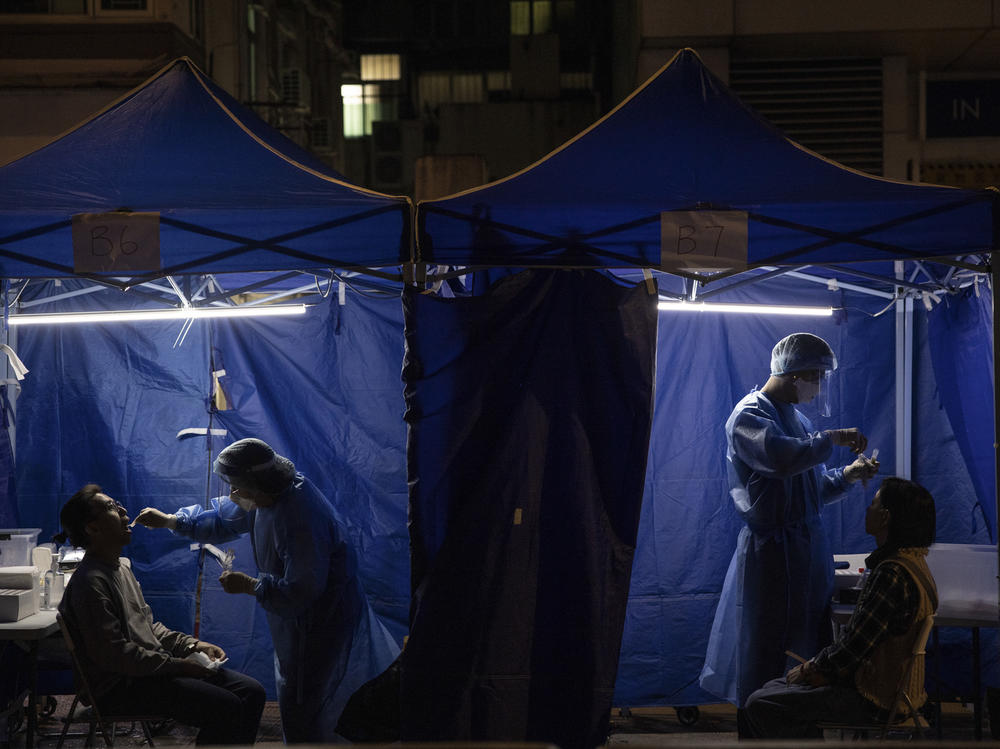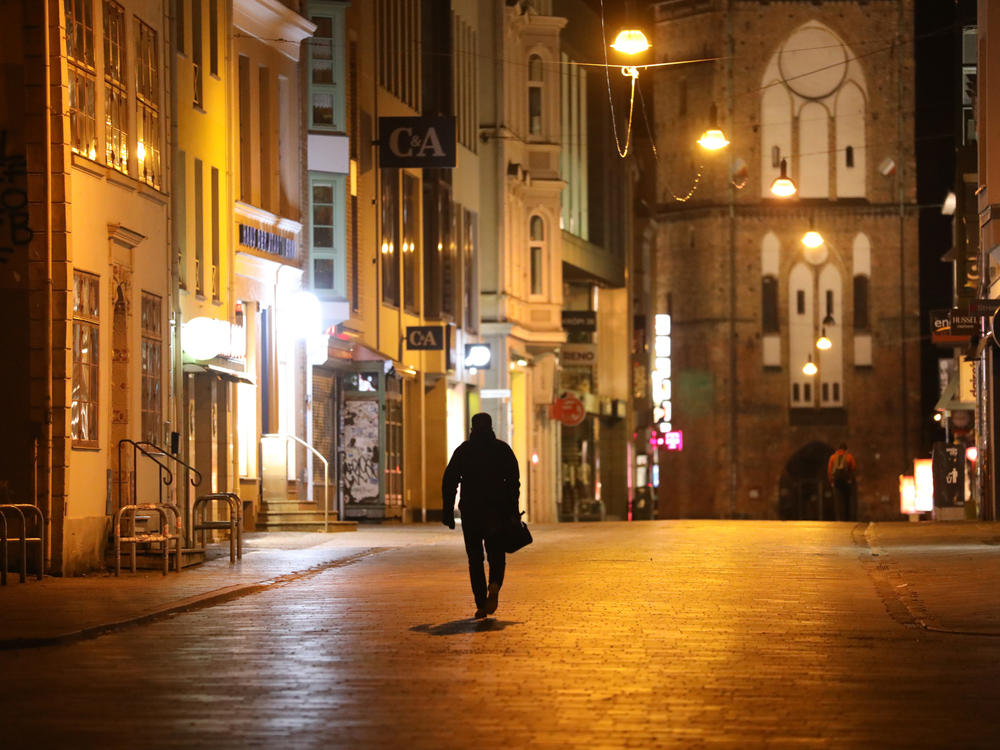Section Branding
Header Content
Welcome to the era of omicron rules and regs
Primary Content
The unwanted arrival of the omicron variant of COVID has been accompanied by an unwanted new set of social restrictions in many parts of the globe.
Starting next week, diners in Germany will not only have to show proof that they're vaccinated against COVID but that they're fully boosted to sit down at a restaurant.
Students in Ontario, Canada who had just recently returned to school have been ordered back to their virtual classrooms.
And in Peru, night owls face a new curfew enforced by soldiers to stop the nocturnal spread of this highly transmissible new version of the virus.
"We're definitely seeing a big increase in different kinds of closure and containment policies," says Tom Hale, an associate professor at the Blavatnik School of Government at the University of Oxford. Hale is part of a team that runs the Oxford COVID-19 Government Response Tracker, which documents COVID mandates and restrictions around the world.
Most of the new policies put in place since the arrival of omicron – which include travel bans, stay-at-home orders, curfews and vaccine mandates, among other measures — are "short of what most people understand to be 'full lockdown,' " says Hale. "But certainly, they're ways of keeping people from transmitting disease to each other."
Omicron-era restrictions have a different purpose
Apart from China and a few other places, the goal of these current COVID mandates are different from those in the the early days of the pandemic, says Hale. "They're being used to try to ease pressure off of health care systems during surges."
That's the case in many European countries, he adds. "It's not like they want to eliminate COVID. They're trying to keep the hospitals from overflowing."
Varied rules for the vaccinated and unvaccinated
Many of the new restrictions are applied differently for the vaccinated and the unvaccinated, says Hale. In the Philippines, for instance, President Rodrigo Duterte has ordered unvaccinated people to not leave their homes except to carry out essential tasks. Vaccinated people, however, are allowed to do so.
And in other countries, such as the Caribbean island nation of Dominica, unvaccinated visitors are required to quarantine for 5 to 7 days — while vaccinated visitors who pass an antigen test can head straight to the beach.
Travel bans 'too little, too late'
Some governments have tried to ward off omicron by banning select visitors.
Late in November, the U.S., along with many countries in Europe, began prohibiting foreign travelers from southern Africa after nations there reported detecting the omicron variant. These bans, which mostly have all been rescinded, prompted charges of racism since omicron had been found in other countries early on, including European nations like Belgium.
The travel bans haven't exactly been effective. Israel, for example, had initially shut down its borders to all international visitors — but domestic infections spiked anyway. Now, it's giving up on that policy and resuming regular travel.
The only countries that have significantly slowed the spread of COVID, says Hale, have been those with incredibly strict border controls — like those adopted by North Korea, China, New Zealand and Australia. These places have blocked most travelers from entering entirely — and have required all others to go through rigorous quarantine procedures.
Still, those restrictions have its limits. "At best, you can it slow it down a little bit," Hale says. "But you're not really going to keep it out."
Even with all of its efforts, Australia, for example, hasn't been able to keep omicron at bay. Cases are now exploding in the country, and the number of reported infections more than doubled in the first week of 2022 compared to the last week of December.
"Most of the data has shown that the travel policies, as they've existed, haven't had much impact," says Hale.
Most bans are often "too little, too late," he adds — and tend to be more about politics than virology. "There's a political desire [by politicians] to seem like they're doing something."
Measures work best with public support
Hale says it's clear the world is going to be living with some forms of travel bans, lockdowns and vaccine mandates at least for the foreseeable future. But ultimately, the government can't police every home to ensure that people are say, following gathering size restrictions or going home before the designated curfew.
The measures will only slow transmission if people actually abide by them, says Hale. "The effectiveness of these policies very much depends on whether people think others are following them," he says. "It's a little bit about how much they trust the government, but it's really more driven by how much you trust your neighbors. Are they going to [abide by the restrictions]? If they do, then you will, too."
Copyright 2022 NPR. To see more, visit https://www.npr.org.


